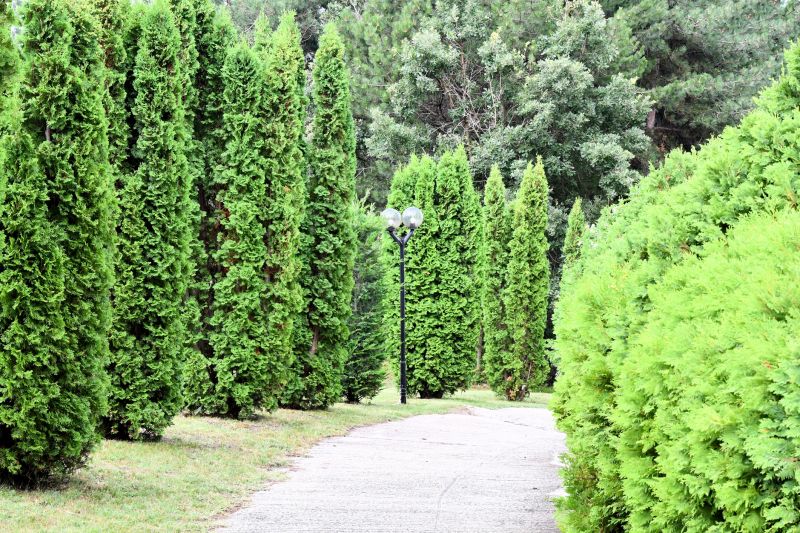Top Products For Garden Path Constructions Options
Explore the leading tools and materials to create durable, attractive garden pathways that enhance your outdoor space.
 Creating a charming and functional garden path involves selecting the right products to ensure durability, aesthetic appeal, and ease of installation. From natural stone to concrete pavers, there are numerous options suited to different styles and budgets. Properly constructed pathways can enhance the overall landscape design, providing clear walkways that guide visitors and connect various garden zones. When choosing materials, it is important to consider factors such as weather resistance, slip resistance, and maintenance requirements to ensure the pathway remains attractive and functional over time.
Creating a charming and functional garden path involves selecting the right products to ensure durability, aesthetic appeal, and ease of installation. From natural stone to concrete pavers, there are numerous options suited to different styles and budgets. Properly constructed pathways can enhance the overall landscape design, providing clear walkways that guide visitors and connect various garden zones. When choosing materials, it is important to consider factors such as weather resistance, slip resistance, and maintenance requirements to ensure the pathway remains attractive and functional over time.
Top Overall Option
Concrete Paver System
A versatile and durable choice, concrete paver systems offer a wide range of shapes, sizes, and colors to create customized garden pathways. They are relatively straightforward to install and maintain, making them popular among DIY enthusiasts. Their sturdy construction provides stability and longevity, suitable for various weather conditions. Proper installation involves preparing a solid base and interlocking the pavers securely, ensuring a smooth and even surface that can withstand foot traffic over time.
Types of Products For Garden Path Constructions
Natural Stone Slabs
Provides a natural, organic look with stones like flagstone or slate, ideal for rustic or traditional gardens.
Concrete Pavers
Available in many shapes and colors, offering flexibility for custom designs and easy installation.
Brick Pavers
Classic and timeless, brick pavers can create a traditional or vintage aesthetic.
Gravel
A cost-effective and permeable option that provides a casual, rustic appearance.
Mulch
Organic material that offers a soft, natural look and easy installation, suitable for informal pathways.
Limestone Tiles
Smooth and elegant, limestone tiles can add a refined touch to garden pathways.
Stepping Stones
Standalone stones placed at intervals, ideal for a casual or whimsical pathway design.
Wooden Planks
Creates a rustic or natural look, suitable for garden decks and pathways through wooded areas.
Metal Edging
Used to define and contain pathway materials, helping to keep the design tidy and maintained.
Plastic Edging
Flexible and easy to install, plastic edging helps to separate pathways from flower beds or lawns.
Cobbles
Small, rounded stones that can be used to create a textured, old-world pathway appearance.
Flagstone
Flat stones that can be fitted together to form natural-looking, durable pathways.
Concrete Edging Blocks
Precast blocks that provide a clean, structured border for pathways and garden beds.
Decomposed Granite
Fine gravel that compacts well, creating a stable and permeable pathway surface.
Recycled Rubber Pavers
Eco-friendly and cushioned, suitable for pathways that require additional shock absorption.
Popular Choices
Widely used for their versatility and range of design options, suitable for various garden styles.
Favored for their aesthetic appeal and durability, blending well with natural landscapes.
A common choice for casual or rustic pathways, valued for ease of installation and drainage.
Timeless and traditional, often selected for their classic look and ease of maintenance.
Popular for creating informal pathways with a whimsical or natural feel.
Chosen for their elegant appearance and smooth surface, suitable for formal garden paths.
A low-cost, easy-to-install option often used in informal garden settings.
Provides a textured, vintage look, often used in historic or cottage garden designs.
Favored for natural aesthetics and durability, suitable for creating rustic pathways.
Increasingly popular for eco-conscious projects, offering comfort and resilience.
Natural stone options like flagstone or slate offer a timeless look and can blend seamlessly into many garden styles. For those seeking a more uniform appearance, concrete pavers come in various shapes, sizes, and colors, allowing for customized designs. Gravel pathways provide excellent drainage and a rustic feel, while brick options lend a classic, traditional appearance. Additionally, edging materials such as metal, plastic, or stone help define the pathway and prevent shifting or spreading of loose materials.
Installation techniques vary depending on the material chosen, but generally include preparing a stable base, leveling the surface, and securing the pavers or stones in place. Proper planning and preparation can help prevent issues like uneven surfaces or weed intrusion. Maintenance requirements differ as well; some materials may need periodic sealing or re-leveling, while others are more low-maintenance. With the right selection and installation approach, a garden pathway can become a durable and attractive feature that complements the overall landscape design.
Key Buying Considerations
- Material durability and weather resistance to ensure longevity of the pathway.
- Aesthetic compatibility with the existing landscape and garden style.
- Ease of installation, especially if undertaking a DIY project.
- Maintenance requirements, including cleaning, sealing, or re-leveling.
- Slip resistance to ensure safety during wet or icy conditions.
- Drainage properties to prevent water pooling or erosion.
- Cost and overall budget for the project.
- Availability of the chosen materials in your area.
- Compatibility with existing garden features and structures.
- Environmental factors that may influence material choice, such as freeze-thaw cycles.
- Flexibility for future modifications or expansions of the pathway.
- Edge stability to prevent shifting or spreading of loose materials.
- Color options and how they complement the surrounding landscape.
- Size and shape options to achieve the desired design pattern.
- Environmental impact, including sourcing and recyclability if relevant.
This page contains affiliate links. We may earn a commission if you make a purchase through these links, at no additional cost to you.
